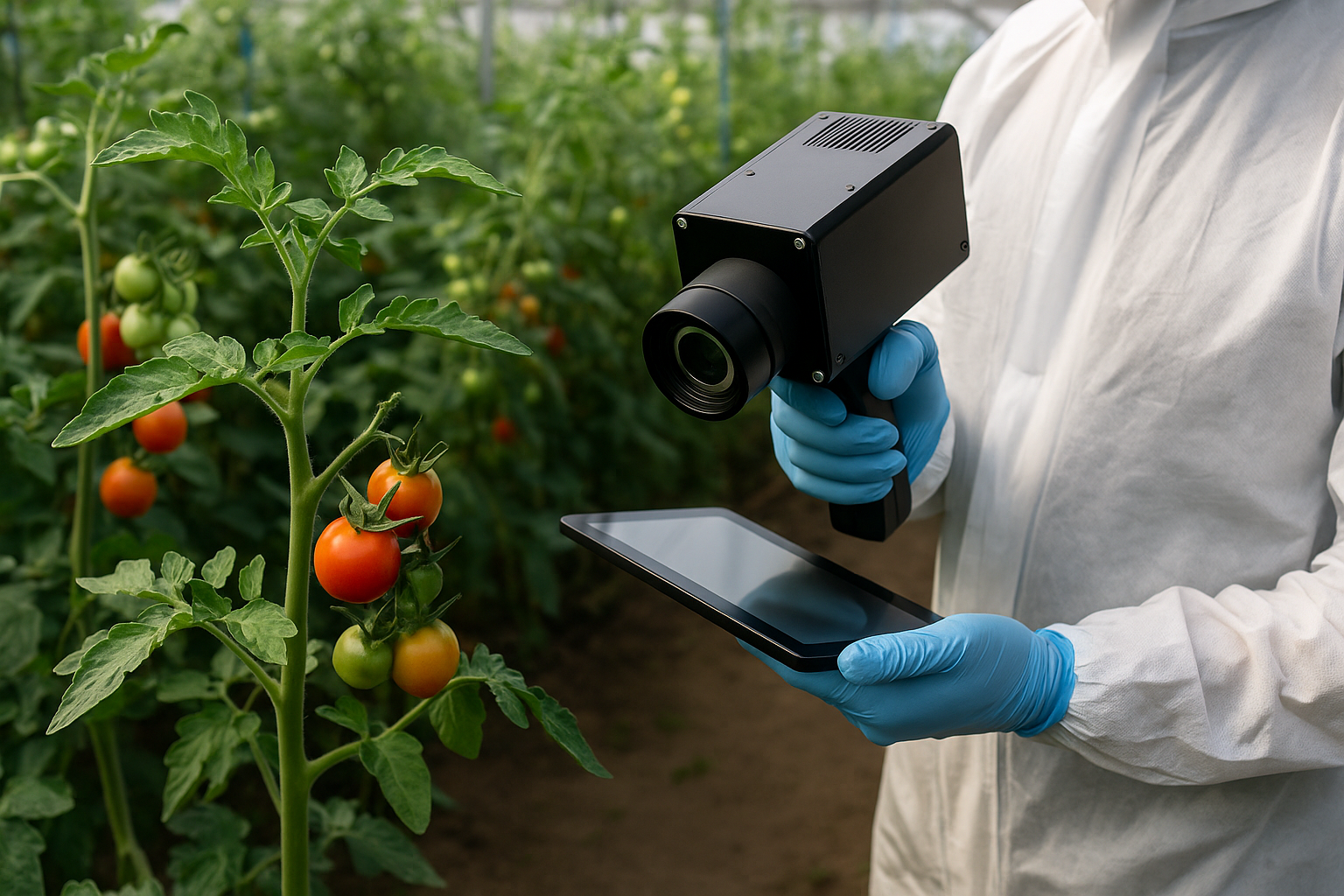Next-gen agriculture: Non-destructive tech emerges as key to healthier crops and food security
The study states that non-destructive detection technologies (NDDTs) address these issues by identifying diseases at early stages, even before visible symptoms appear. Unlike traditional methods, NDDTs allow real-time monitoring, preserve plant integrity, and offer high-throughput analysis for large-scale agricultural operations. Early detection means timely interventions, minimizing losses and reducing reliance on chemical treatments.

Agriculture is under increasing pressure to boost production while safeguarding crops from devastating diseases. Conventional detection methods, often slow and invasive, are no longer sufficient to meet these challenges. A new study highlights how advanced non-destructive technologies are poised to transform plant disease detection, enabling earlier, faster, and more accurate diagnosis.
The research, titled "Application of Non-Destructive Technology in Plant Disease Detection: Review", published in Agriculture (2025, Vol. 15, Issue 1670), reviews cutting-edge innovations that detect plant diseases without harming crops. By examining spectral and imaging technologies, the authors present a comprehensive roadmap for integrating these tools into modern agriculture to improve food security and sustainability.
Why non-destructive detection is critical for modern agriculture
Plant diseases are responsible for significant crop losses worldwide, threatening food supply chains and farmer livelihoods. Traditional diagnostic methods, such as chemical assays and microscopic analysis, are time-consuming, labor-intensive, and often require destructive sampling. These limitations hinder early intervention, allowing diseases to spread before countermeasures can be applied.
The study states that non-destructive detection technologies (NDDTs) address these issues by identifying diseases at early stages, even before visible symptoms appear. Unlike traditional methods, NDDTs allow real-time monitoring, preserve plant integrity, and offer high-throughput analysis for large-scale agricultural operations. Early detection means timely interventions, minimizing losses and reducing reliance on chemical treatments.
By combining rapid detection with accuracy, these technologies have the potential to reshape crop management strategies. They enable precision agriculture practices where targeted interventions replace blanket treatments, enhancing sustainability while reducing costs.
What technologies are transforming plant disease detection?
The paper categorizes the most promising tools into spectral technologies and imaging technologies, each offering unique benefits and applications.
Spectral technologies, including near-infrared spectroscopy (NIRS), Raman spectroscopy, and terahertz spectroscopy, analyze biochemical and molecular changes in plant tissues.
- NIRS is effective in detecting diseases such as citrus greening and apple watercore by identifying subtle chemical variations in leaves and fruits.
- Raman spectroscopy provides molecular-level insight, detecting pathogen presence even at early infection stages, which is crucial for diseases that progress rapidly.
- Terahertz spectroscopy offers deep tissue penetration, enabling the detection of internal water content and biochemical shifts without damaging the plant.
Imaging technologies, including hyperspectral imaging, digital imaging, and thermal imaging, capture visual and spectral data that can reveal disease presence.
- Hyperspectral imaging goes beyond conventional photography, capturing a broad spectrum of data to detect early symptoms invisible to the naked eye. It also quantifies disease severity, helping farmers prioritize interventions.
- Digital imaging, enhanced with deep learning algorithms, allows for automatic disease classification, making it suitable for field-scale monitoring.
- Thermal imaging identifies temperature variations linked to disease-induced stress, offering non-contact scanning of large areas quickly.
These methods have been successfully applied in detecting a range of diseases across crops, from fungal infections in wheat to bacterial blights in fruits. Their ability to generate accurate, real-time data positions them as vital tools for protecting agricultural productivity.
What are the challenges and future directions?
While non-destructive technologies offer significant benefits, the study points out several barriers to their widespread adoption. High costs of advanced equipment, such as hyperspectral sensors and terahertz spectrometers, limit accessibility for small and medium-scale farmers. Moreover, environmental factors can interfere with spectral readings, requiring robust calibration systems to ensure accuracy in varying conditions.
Data management is another critical challenge. Imaging and spectral techniques generate vast datasets that demand sophisticated processing and storage solutions. Without adequate computing infrastructure and expertise, the full potential of these technologies remains untapped. Additionally, AI-based analysis, while powerful, requires high-quality annotated data for training, which is not always readily available.
The authors recommend integrating spectral and imaging methods to enhance detection reliability. Combining multiple modalities can overcome the weaknesses of individual systems, offering more comprehensive assessments. They also call for the development of portable, low-cost devices to make NDDTs accessible to farmers in resource-limited regions.
Looking ahead, the paper identifies several emerging trends:
- AI-driven analytics to improve accuracy and automate disease recognition in real time.
- Edge computing to process data directly in the field, reducing reliance on remote servers.
- Blockchain integration to secure disease data, ensuring traceability and trust across agricultural supply chains.
The researchers advocate for public–private partnerships and policy support to lower costs and promote adoption. Subsidies, training programs, and technology transfer initiatives could accelerate the deployment of these tools globally.
- READ MORE ON:
- non-destructive plant disease detection
- hyperspectral imaging for crop health
- thermal imaging for crop monitoring
- sustainable agriculture with smart sensors
- smart agriculture disease monitoring tools Ask ChatGPT
- precision agriculture disease detection
- Non-Destructive Technology in Plant Disease Detection
- food security
- FIRST PUBLISHED IN:
- Devdiscourse










